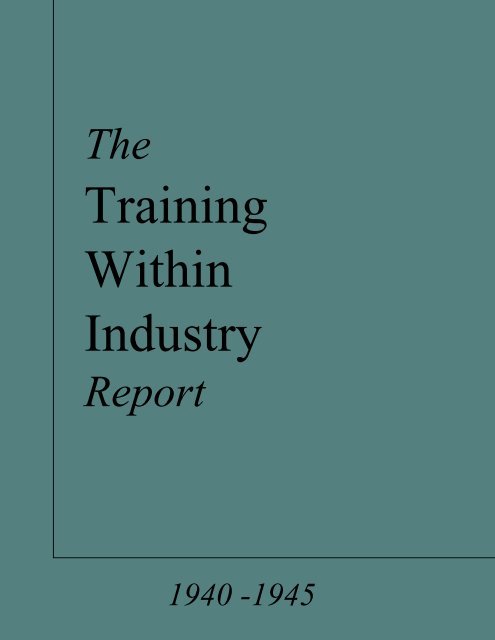Archive for the ‘How To’ Category
How will you allocate your time differently?
I don’t like resolutions, but I do like looking back to assess how spent my time differently over the previous year. Below is a short exercise that could help you get ready for 2021.
Below are some questions intended to help you assess how you spent your time differently in 2020. Take fifteen seconds, or so, to think through each one.
Did you spend more time with your family or less?
Did you spend more time helping yourself or others?
Instead of commuting, what did you do with your time?
Did you work more hours or fewer?
Did you spend more time on your mental/spiritual health or less?
Did you take more vacation days or fewer?
Instead of eating out, what did you do with that time?
Did you exercise more or less?
What did you do with your time freed by reduced business travel do more?
Did you participate in more meetings or fewer?
Did you sleep more or less?
Grab a pen and paper (or print out the text below) and let’s go through the rest of the exercise.
What are the top three questions that caused the strongest emotional response? (Write them down.) For those three questions, think through three scenarios: A) 2021 is just like 2020. B) 2021 amplifies the changes you experienced in 2020. C) 2021 is just like 2019.
For each scenario, write down how you’d allocate your time differently in 2021.
The question that caused the strongest emotional response:
_________________________________________________________________________
With regard to the question above, how would you allocate your time differently in 2021?
Scenario A (same as 2020) ____________________________________________________
Scenario B (amplified changes) _________________________________________________
Scenario C (same as 2019) ____________________________________________________
The question that caused the second strongest emotional response:
________________________________________________________________________
With regard to the question above, how would you allocate your time differently in 2021?
Scenario A (same as 2020) ___________________________________________________
Scenario B (amplified changes) ________________________________________________
Scenario C (same as 2019) ____________________________________________________
The question that caused the third strongest emotional response:
________________________________________________________________________
With regard to the question above, how would you allocate your time differently in 2021?
Scenario A (same as 2020) __________________________________________________
Scenario B (amplified changes) _______________________________________________
Scenario C (same as 2019) ___________________________________________________
My list of questions likely missed important questions for you. You may want to go back and ask yourself other questions and see if your emotional response is strong enough to displace the top three you identified above.
This little exercise doesn’t generate resolutions, nor will it tell you how to allocate your time in 2021. But, I hope it helps you more skillfully navigate the uncertainty that 2021 is certain to bring.
Happy New Year. And thanks for reading.
“Sundial” by Nigel_Brown is licensed under CC BY 2.0
The Foundation of Leadership Development — Work Products
 Leadership development is a good idea in principle, but not in practice. Assessing a person against a list of seven standard competencies does not a leadership development plan make. Nor does a Meyers-Briggs assessment or a strengths assessment. The best way I know to describe the essence of leadership development is through a series of questions to assess and hire new leaders.
Leadership development is a good idea in principle, but not in practice. Assessing a person against a list of seven standard competencies does not a leadership development plan make. Nor does a Meyers-Briggs assessment or a strengths assessment. The best way I know to describe the essence of leadership development is through a series of questions to assess and hire new leaders.
Here’s the first question: Is this person capable of doing the work required for this leadership position? If you don’t start here, choose the person you like most and promote (or hire) them into the new leadership position. It’s much faster, and at least you’ll get along with them as the wheels fall off.
Next question: In this leadership position, what work products must the leader create (or facilitate the creation of)? Work products are objective evidence that the work has been completed. Examples of work products: analyses, reports, marketing briefs, spreadsheets, strategic plans, product launches, test results for new technologies. Here’s a rule: If you can’t define the required work products, you can’t define the work needed to create them. Here’s another rule: If you can’t define the work, you can’t assess a candidate’s ability to do that work. And if you can’t assess a candidate’s ability to the work, you might as well make it a popularity contest and hire the person who makes the interview committee smile.
Next question: Can the candidate show work products they’ve created that fit with those required for the leadership position? To be clear, if the candidate can show examples of all the flavors of work products required for the position, it’s a lateral move for the candidate. That’s not a bad thing, as there are good reasons candidates seek lateral positions (e.g., geographic move due to family or broadening of experience – new product line or customer segment). And if they’ve demonstrated all the work products, but the scope and/or scale are larger, the new position, the new position is a promotion for the candidate. Here’s a rule: if the candidate can’t show you an example of a specific work product or draw a picture of one on the whiteboard, they’ve never done it before. And another rule: when it comes to work products, if the candidate talks about a work product but can’t show you, it’s because they’ve never created one like that. And talking about work products in the future tense means they’ve never done it. When it comes to work products, there’s no partial credit.
Next question: For the work products the candidate has shown us, are they relevant? A candidate won’t be able to show you work products that are a 100% overlap with those required by the leadership position. The context will be different, the market will be different, and the players will be different. But, a 50-70% overlap should be good enough.
Next question: For the relevant work products the candidate has shown us, do they represent more than half of those required? If yes, go to the next question.
Next question: For the work products the candidate has not demonstrated, has the team done them? If the team has done a majority of them, that’s good. Go to the next question.
Next question: For the work products the candidate or team has not demonstrated, can we partner them with an expert (an internal one, I hope) who has? If yes, hire the candidate.
Leadership development starts with the definition of the new work the leader must be able to do in their next position. And the best way I know to define the work is to compile a collection of work products that must be created in the next position and match that against the collection of work products the leader has created. The difference between the required work products and the ones the leader has demonstrated defines the leadership development plan.
To define the leadership development plan, start with the work products.
And to help the leader develop, think apprenticeship. And for that, see this seminal report from 1945.
Regardless of the question, trust is the answer.
 If you want to make a difference, build trust.
If you want to make a difference, build trust.
If you want to build trust, do a project together.
If you want to build more trust, help the team do work they think is impossible.
If you want to build more trust, contribute to the project in the background.
If you want to build more trust, actively give credit to others.
If you want to build more trust, deny your involvement.
If you want to create change, build trust.
If you want to build trust, be patient.
If you want to build more trust, be more patient.
If you want to build more trust, check your ego at the door so you can be even more patient.
If you want to have influence, build trust.
If you want to build trust, do something for others.
If you want to build more trust, do something for others that keeps them out of trouble.
If you want to build more trust, do something for others that comes at your expense.
If you want to build more trust, do it all behind the scenes.
If you want to build more trust, plead ignorance.
If you want the next project to be successful, build trust.
If you want to build trust, deliver what you promise.
If you want to build more trust, deliver more than you promise.
If you want to build more trust, deliver more than you promise and give the credit to others.
If you want deep friendships, build trust.
If you want to build trust, give reinforcing feedback.
If you want to build more trust, give reinforcing and correcting feedback in equal amounts.
If you want to build trust, give reinforcing feedback in public and correcting feedback in private.
If you want your work to have meaning, build trust.
“[1823] Netted Pug (Eupithecia venosata)” by Bennyboymothman is licensed under CC BY 2.0
Technical Risk, Market Risk, and Emotional Risk
Technical risk – Will it work?
Market risk – Will they buy it?
Emotional risk – Will people laugh at your crazy idea?
Technical risk – Test it in the lab.
Market risk – Test it with the customer.
Emotional risk – Try it with a friend.
Technical risk – Define the right test.
Market risk – Define the right customer.
Emotional risk – Define the right friend.
Technical risk – Define the minimum acceptable performance criteria.
Market risk – Define the minimum acceptable response from the customer.
Emotional risk – Define the minimum acceptable criticism from your friend.
Technical risk – Can you manufacture it?
Market risk – Can you sell it?
Emotional risk – Can you act on your crazy idea?
Technical risk – How sure are you that you can manufacture it?
Market risk – How sure are you that you can sell it?
Emotional risk – How sure are you that you can act on your crazy idea?
Technical risk – When the VP says it can’t be manufactured, what do you do?
Market risk – When the VP says it can’t be sold, what do you do?
Emotional risk – When the VP says your idea is too crazy, what do you do?
Technical risk – When you knew the technical risk was too high, what did you do?
Market risk – When you knew the market risk was too high, what did you do?
Emotional risk – When you knew someone’s emotional risk was going to be too high, what did you do?
Technical risk – Can you teach others to reduce technical risk? How about increasing it?
Market risk – Can you teach others to reduce technical risk? How about increasing it?
Emotional risk – Can you teach others to reduce emotional risk? How about increasing it?
Technical risk – What does it look like when technical risk is too low? And the consequences?
Market risk – What does it look like when technical risk is too low? And the consequences?
Emotional risk – What does it look like when emotional risk is too low? And the consequences?
We are most aware of technical risk and spend most of our time trying to reduce it. We have the mindset and toolset to reduce it. We know how to do it. But we were not taught to recognize when technical risk is too low. And if we do recognize it’s too low, we don’t know how to articulate the negative consequences. With all this said, market risk is far more dangerous.
We’re unfamiliar with the toolset and mindset to reduce market risk. Where we can change the design, run the test, and reduce technical risk, market risk is not like that. It’s difficult to understand what drives the customers’ buying decision and it’s difficult to directly (and quickly) change their buying decision. In short, it’s difficult to know what to change so they make a different buying decision. And if they don’t buy, you don’t sell. And that’s a big problem. With that said, emotional risk is far more debilitating.
When a culture creates high emotional risk, people keep their best ideas to themselves. They don’t want to be laughed at or ridiculed, so their best ideas don’t see the light of day. The result is a collection of wonderful ideas known only to the underground Trust Network. A culture that creates high emotional risk has insufficient technical and market risk because everyone is afraid of the consequences of doing something new and different. The result – the company with high emotional risk follows the same old script and does what it did last time. And this works well, right up until it doesn’t.
Here’s a three-pronged approach that may help.
- Continue to reduce technical risk.
- Learn to reduce market risk early in a project.
- And behave in a way that reduces emotional risk so you’ll have the opportunity to reduce technical and market risk.
Image credit — Shan Sheehan
It’s time to start starting.
 What do we do next? I don’t know
What do we do next? I don’t know
What has been done before?
What does it do now?
What does it want to do next?
If it does that, who cares?
Why should we do it? I don’t know.
Will it increase the top line? If not, do something else.
Will it increase the bottom line? If so, let someone else do it.
What’s the business objective?
Who will buy it? I don’t know.
How will you find out?
What does it look like when you know they’ll buy it?
Why do you think it’s okay to do the work before you know they’ll buy it?
What problem must be solved? I don’t know.
How will you define the problem?
Why do you think it’s okay to solve the problem before defining it?
Why do you insist on solving the wrong problem? Don’t you know that ready, fire, aim is bad for your career?
Where’s the functional coupling? When will you learn about Axiomatic Design?
Where is the problem? Between which two system elements?
When does the problem happen? Before what? During what? After what?
Will you separate in time or space?
When will you learn about TRIZ?
Who wants you to do it? I don’t know.
How will you find out?
When will you read all the operating plans?
Why do you think it’s okay to start the work before knowing this?
Who doesn’t want you to do it? I don’t know.
How will you find out?
Who looks bad if this works?
Who is threatened by the work?
Why do you think it’s okay to start the work before knowing this?
What does it look like when it’s done? I don’t know.
Why do you think it’s okay to start the work before knowing this?
What do you need to be successful? I don’t know.
Why do you think it’s okay to start the work before knowing this?
Starting is essential, but getting ready to start is even more so.
Image credit — Jon Marshall
Effectiveness at the Expense of Efficiency
 Efficiency is a simple measurement – output divided by resources needed to achieve it. How much did you get done and how many people did you need to do it? What was the return on the investment? How much money did you make relative to how much you had to invest? We have efficiency measurements for just about everything. We are an efficiency-based society.
Efficiency is a simple measurement – output divided by resources needed to achieve it. How much did you get done and how many people did you need to do it? What was the return on the investment? How much money did you make relative to how much you had to invest? We have efficiency measurements for just about everything. We are an efficiency-based society.
It’s easy to create a metric for efficiency. Figure out the output you can measure and divide it by the resources you think you used to achieve it. While a metric like this is easy to calculate, it likely won’t provide a good answer to what we think is the only question worth asking– how do we increase efficiency?
Problem 1. The resources you think are used to produce the output aren’t the only resources you used to generate the output. There are many resources that contributed to the output that you did not measure. And not only that, you don’t know how much those resources actually cost. You can try the tricky trick of fully burdened cost, where the labor rate is loaded with an overhead percentage. But that’s, well, nothing more than an artifact of a contrived accounting system. You can do some other stuff like calculate the opportunity cost of deploying those resources on other projects. I’m not sure what that will get you, but it won’t get you the actual cost of achieving the output you think you achieved.
Problem 2. We don’t measure what’s important or meaningful. We measure what’s easy to measure. And that’s a big problem because you end up beating yourself about the head and shoulders trying to improve something that is easy to measure but not all that meaningful. The biggest problem here is local optimization. You want something easy to measure so you cull out a small fraction of a larger process and increase the output of that small part of the process. The thing is, your customer doesn’t care about the efficiency of that small piece of that process. And, improving that small piece likely doesn’t do anything for the output of the total process. If more products aren’t leaving the factory, you didn’t do anything.
Problem 3. Productivity isn’t all that important. What’s important is effectiveness. If you are highly efficient at the wrong thing, you may be efficient, but you’re also ineffective. If you launch a product in a highly efficient way and no one buys it, your efficiency numbers may be off the charts, but your effectiveness numbers are in the toilet.
We have very few metrics on effectiveness. But here are some questions a good effectiveness metric should help you answer.
- Did we work on the right projects?
- Did we make good decisions?
- Did we put the right people on the projects?
- Did we do what we said we’d do?
- After the project, is the team excited to do a follow-on project?
- Did our customers benefit from our work?
- Do our partners want to work with us again?
- Did we set ourselves up to do our work better next time?
- Did we grow our young talent?
- Did we have fun?
- Do more people like to work at our company?
- Have we developed more trust-based relationships over the last year?
- Have we been more transparent with our workforce this year?
If I had a choice between efficiency and effectiveness, I’d choose effectiveness.
Image credit – Bruce Tuten
Want to succeed? Learn how to deliver customer value.
 Whatever your initiative, start with customer value. Whatever your project, base it on customer value. And whatever your new technology, you guessed it, customer value should be front and center.
Whatever your initiative, start with customer value. Whatever your project, base it on customer value. And whatever your new technology, you guessed it, customer value should be front and center.
Whenever the discussion turns to customer value, expect confusion, disagreement, and, likely, anger. To help things move forward, here’s an operational definition I’ve found helpful:
When they buy it for more than your cost to make it, you have customer value.
And when there’s no way to pull out of the death spiral of disagreement, use this operational definition to avoid (or stop) bad projects:
When no one will buy it, you don’t have customer value and it’s a bad project.
As two words, customer and value don’t seem all that special. But, when you put them together, they become words to live by. But, also, when you do put them together, things get complicated. Here’s why.
To provide customer value, you’ve got to know (and name) the customer. When you asked “Who is the customer?” the wheels fall off. Here are some wrong answers to that tricky question. The Board of Directors is the customer. The shareholders are the customers. The distributor is the customer. The OEM that integrates your product is the customer. And the people that use the product are the customer. Here’s an operational definition that will set you free:
When someone buys it, they are the customer.
When the discussions get sticky, hold onto that definition. Others will try to bait you into thinking differently, but don’t bite. It will be difficult to stand your ground. And if you feel the group is headed in the wrong direction, try to set things right with this operational definition:
When you’ve found the person who opens their wallet, you’ve found the customer.
Now, let’s talk about value. Isn’t value subjective? Yes, it is. And the only opinion that matters is the customer’s. And here’s an operational definition to help you create customer value:
When you solve an important customer problem, they find it valuable.
And there you have it. Putting it all together, here’s the recipe for customer value:
- Understand who will buy it.
- Understand their work and identify their biggest problem.
- Solve their problem and embed it in your offering.
- Sell it for more than it costs you to make it.
Image credit — Caroline
Love Everyone and Tell the Truth
 If you see someone doing something that’s not quite right, you have a choice – call them on their behavior or let it go.
If you see someone doing something that’s not quite right, you have a choice – call them on their behavior or let it go.
In general, I have found it’s more effective to ignore behavior you deem unskillful if you can. If no one will get hurt, say nothing. If it won’t start a trend, ignore it. And if it’s a one-time event, look the other way. If it won’t cause standardization on a worst practice, it never happened.
When you don’t give attention to other’s unskillful behavior, you don’t give it the energy it needs to happen again. Just as a plant dies when it’s not watered, unskillful behavior will wither on the vine if it’s ignored. Ignore it and it will die. But the real reason to ignore unskillful behavior is that it frees up time to amplify skillful behavior.
If you’re going to spend your energy doing anything, reinforce skillful behavior. When you see someone acting skillfully, call it out. In front of their peers, tell them what you liked and why you liked it. Tell them how their behavior will make a difference for the company. Say it in a way that others hear. Say it in a way that everyone knows this behavior is special. And if you want to guarantee that the behavior will happen again, send an email of praise to the boss of the person that did the behavior and copy them on the email. The power of sending an email of praise is undervalued by a factor of ten.
When someone sends your boss an email that praises you for your behavior, how do you feel?
When someone sends your boss an email that praises you for your behavior, will you do more of that behavior or less?
When someone sends your boss an email that praises you for your behavior, what do you think of the person that sent it?
When someone sends your boss an email that praises you for your behavior, will you do more of what the sender thinks important or less?
And now the hard part. When you see someone behaving unskillfully and that will damage your company’s brand, you must call them on their behavior. To have the most positive influence, give your feedback as soon as you see it. In a cause-and-effect way, the person learns that the unskillful behavior results in a private discussion on the negative impact of their behavior. There’s no question in their mind about why the private discussion happened and, because you suggested a more skillful approach, there’s clarity on how to behave next time. The first time you see the unskillful behavior, they deserve to be held accountable in private. They also deserve a clear explanation of the impacts of their behavior and a recipe to follow going forward.
And now the harder part. If, after the private explanation of the unskillful behavior that should stop and the skillful behavior should start, they repeat the unskillful behavior, you’ve got to escalate. Level 1 escalation is to hold a private session with the offender’s leader. This gives the direct leader a chance to intervene and reinforce how the behavior should change. This is a skillful escalation on your part.
And now the hardest part. If, after the private discussion with the direct leader, the unskillful behavior happens again, you’ve got to escalate. Remember, this unskillful behavior is so unskillful it will hurt the brand. It’s now time to transition from private accountability to public accountability. Yes, you’ve got to call out the unskillful behavior in front of everyone. This may seem harsh, but it’s not. They and their direct leader have earned every bit of the public truth-telling that will soon follow.
Now, before going public, it’s time to ask yourself two questions. Does this unskillful behavior rise to the level of neglect? And, does this unskillful behavior violate a first principle? Meaning, does the unskillful behavior undermine a fundamental, or foundational element, of how the work is done? Take your time with these questions, because the situation is about to get real. Really real. And really uncomfortable.
And if you answer yes to one of those two questions, you’ve earned the right to ask yourself a third. Have you reached bedrock? Meaning, your position grounded deeply in what you believe. Meaning, you’ve reached a threshold where things are non-negotiable. Meaning, no matter what the negative consequences to your career, you’re willing to stand tall and take the bullets. Because the bullets will fly.
If you’ve reached bedrock, call out the unskillful behavior publicly and vehemently. Show no weakness and give no ground. And when the push-back comes, double down. Stand on your bedrock, and tell the truth. Be effective, and tell the truth. As Ram Dass said, love everyone and tell the truth.
If you want to make a difference, amplify skillful behavior. Send emails of praise. And if that doesn’t work, send more emails of praise. Praise publicly and praise vehemently. Pour gasoline on the fire. And ignore unskillful behavior, when you can.
And when you can’t ignore the unskillful behavior, before going public make sure the behavior violates a first principle. And make sure you’re standing on bedrock. And once you pass those tests, love everyone and tell the truth.
Image credit — RamDass.org
Learn to Recognize Waiting
If you want to do a task, but you don’t have what you need, that’s waiting for a support resource. If you need a tool, but you don’t have it, you wait for a tool. If you need someone to do the task, but you don’t have anyone, you wait for people. If you need some information to make a decision, but you don’t have it, you wait for information.
If a tool is expensive, usually you have to wait for it. The thinking goes like this – the tool is expensive, so let’s share the cost over too many projects and too many teams. Sure, less work will get done, but when we run the numbers, the tool will look less expensive because it’s used by many people. If you see a long line of people (waiting) or a signup list (people waiting at their desks), what they are waiting for is usually an expensive tool or resource. In that way, to find the cause of waiting, stand at the front of the line and look around. What you see is the cause of the waiting.
If the tool isn’t expensive, buy another one and reduce the waiting. If the tool is expensive, calculate the cost of delay. Cost of delay is commonly used with product development projects. If the project is delayed by a month, the incremental revenue from the product launch is also delayed by a month. That incremental revenue is the cost of delaying the project by a month. When the cost of delay is larger than the cost of an expensive tool, it makes sense to buy another expensive tool. But, to purchase that expensive tool requires multiple levels of approvals. So, the waiting caused by the tool results in waiting for approval for the new tool. I guess there’s a cost of delay for the approval process, but let’s not go there.
Most companies have more projects than people, and that’s why projects wait. And when projects wait, projects are late. Adding people is like getting another expensive tool. They are spread over too many projects, and too little gets done. And like with expensive tools, getting more people doesn’t come easy. New hires can be justified (more waiting in the approval queue), but that takes time to find them, hire them, and train them. Hiring temporary people is a good option, though that can seem too expensive (higher hourly rate), it requires approval, and it takes time to train them. Moving people from one project to another is often the best way because it’s quick and the training requirement is less. But, when one project gains a person, another project loses one. And that’s often the rub.
When it’s time to make an important decision and the team has to wait for missing information, the project waits. And when projects wait, projects are late. It’s difficult to see the waiting caused by missing or uncommunicated information, but it can be done. The easiest to see when the information itself is a project deliverable. If a milestone review requires a formal presentation of the information, the review cannot be held without it. The delay of the milestone review (waiting) is objective evidence of missing information.
Information-based waiting is relatively easy to see when the missing information violates a precedent for decision making. For example, if the decision is always made with a defined set of data or information, and that information is missing, the precedent is violated and everyone knows the decision cannot be made. In this case, everyone’s clear why the decision cannot be made, everyone’s clear on what information is missing, and everyone’s clear on who dropped the ball.
It’s most difficult to recognize information-based waiting when the decision is new or different and requires judgment because there’s no requirement for the data and there’s no precedent to fall back on. If the information was formally requested and linked to the decision, it’s clear the information is missing and the decision will be delayed. But if it’s a new situation and there’s no agreement on what information is required for the decision, it’s almost impossible to discern if the information is missing. In this situation, it comes down to trust in the decision-maker. If you trust the decision-maker and they say there’s information missing, then there’s information missing. If you trust the decision-maker and they say there’s no information missing, they should make the decision. But if you don’t trust the decision-maker, then all bets are off.
In general, waiting is bad. And it’s helpful if you can recognize when projects are waiting. Waiting is especially bad went the delayed task is on the critical path because when the project is waiting on a task that’s on the critical path, there’s a day-for-day slip in the completion date. Hint: it’s important to know which tasks and decisions are on the critical path.
Image credit — Tomasz Baranowski
Stop, Start, Continue the Hard Way
 The stop, start, continue method (SSC) is a simple, yet powerful, way to plan your day, week and year. And though it’s simple, it’s not simplistic. And though it looks straightforward, it’s onion-like in its layers.
The stop, start, continue method (SSC) is a simple, yet powerful, way to plan your day, week and year. And though it’s simple, it’s not simplistic. And though it looks straightforward, it’s onion-like in its layers.
Stop, start, continue (SSC) is interesting in that it’s forward-looking, present-looking, and rearward-looking at the same time. And its power comes from the requirement that the three time perspectives must be reconciled with each other. Stopping is easy, but what will start? Starting is easy, unless nothing is stopped. Continuing is easy, but it’s not the right thing if the rules have changed. And starting can’t start if everything continues.
Stop. With SSC, stopping is the most important part. That’s why it’s first in the sequence. When everyone’s plates are full and every meeting is an all-you-can-eat buffet, without stopping, all the new action items slathered on top simply slip off the plate and fall to the floor. And this is double trouble because while it’s clear new action items are assigned, there’s no admission that the carpet is soiled with all those recently added action items.
Here’s a rule: If you don’t stop, you can’t start.
And here’s another: Pros stop, and rookies start.
With continuous improvement, you should stop what didn’t work. But with innovation, you should stop what was successful. Let others fan the flames of success while you invent the new thing that will start a bigger blaze.
Start. With SSC, starting is the easy part, but it shouldn’t be. Resources are finite, but we conveniently ignore this reality so we can start starting. The trouble with starting is that no one wants to let go of continuing. Do everything you did last year and start three new initiatives. Continue with your current role, but start doing the new job so you can get the promotion in three years.
Here’s a rule: Starting must come at the expense of continuing.
And here’s another: Pros do stop, start, continue, and rookies do start, start, start.
Continue. With SSC, continue is underrated. If you’re always starting, it’s because you have nothing good to continue. And if you’ve got a lot of continuing to do, it’s because you’ve got a lot of good things going on. And continuing is efficient because you’re not doing something for the first time. And everyone knows how to do the work and it goes smoothly.
But there’s a dark side to continue – it’s called the status quo. The status quo is a powerful, one-trick pony that only knows how to continue. It hates stopping and blocks all starting. Continuing is the mortal enemy of innovation.
Here’s a rule: Continuing must stop, or starting can’t start.
And here’s another: Pros continue and stop before they start, and rookies start.
SSC is like juggling three balls at once. Just as it’s not juggling unless it’s three balls at the same time, it’s not SSC unless it’s stop, start, continue all done at the same time. And just as juggling two balls at once isn’t juggling, it’s not SSC if it’s just two out of the three. And just as dropping two of the three balls on the floor isn’t juggling, it’s not SSC if it’s starting, starting, starting.
Image credit – kosmolaut
A Recipe to Grow Talent
 Do it for them, then explain. When the work is new for them, they don’t know how to do it. You’ve got to show them how to do it and explain everything. Tell them about your top-level approach; tell them why you focus on the new elements; show them how to make the chart that demonstrates the new one is better than the old one. Let them ask questions at every step. And tell them their questions are good ones. Praise them for their curiosity. And tell them the answers to the questions they should have asked you. And tell them they’re ready for the next level.
Do it for them, then explain. When the work is new for them, they don’t know how to do it. You’ve got to show them how to do it and explain everything. Tell them about your top-level approach; tell them why you focus on the new elements; show them how to make the chart that demonstrates the new one is better than the old one. Let them ask questions at every step. And tell them their questions are good ones. Praise them for their curiosity. And tell them the answers to the questions they should have asked you. And tell them they’re ready for the next level.
Do it with them, and let them hose it up. Let them do the work they know how to do, you do all the new work except for one new element, and let them do that one bit of new work. They won’t know how to do it, and they’ll get it wrong. And you’ve got to let them. Pretend you’re not paying attention so they think they’re doing it on their own, but pay deep attention. Know what they’re going to do before they do it, and protect them from catastrophic failure. Let them fail safely. And when then hose it up, explain how you’d do it differently and why you’d do it that way. Then, let them do it with your help. Praise them for taking on the new work. Praise them for trying. And tell them they’re ready for the next level.
Let them do it, and help them when they need it. Let them lead the project, but stay close to the work. Pretend to be busy doing another project, but stay one step ahead of them. Know what they plan to do before they do it. If they’re on the right track, leave them alone. If they’re going to make a small mistake, let them. And be there to pick up the pieces. If they’re going to make a big mistake, casually check in with them and ask about the project. And, with a light touch, explain why this situation is different than it seems. Help them take a different approach and avoid the big mistake. Praise them for their good work. Praise them for their professionalism. And tell them they’re ready for the next level.
Let them do it, and help only when they ask. Take off the training wheels and let them run the project on their own. Work on something else, and don’t keep track of their work. And when they ask for help, drop what you are doing and run to help them. Don’t walk. Run. Help them like they’re your family. Praise them for doing the work on their own. Praise them for asking for help. And tell them they’re ready for the next level.
Do the new work for them, then repeat. Repeat the whole recipe for the next level of new work you’ll help them master.
Image credit — John Flannery



 Mike Shipulski
Mike Shipulski